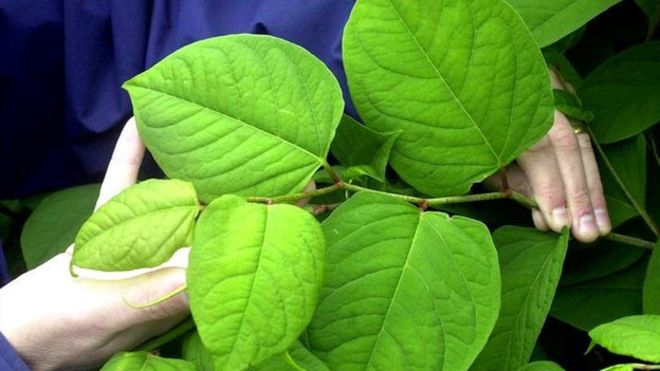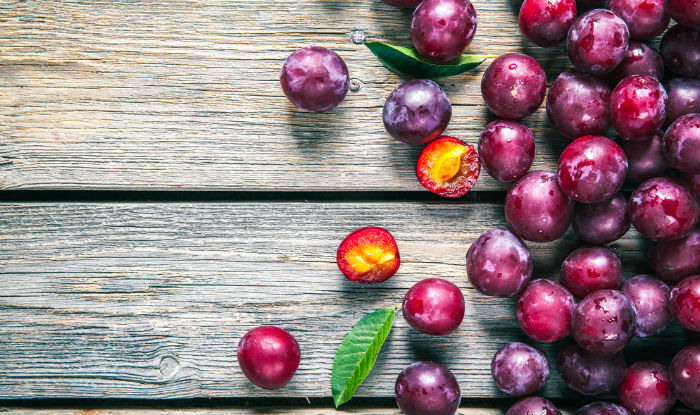Japanese Knotweed was initially introduced as a garden plant during the year 1825. It is remarkable on how quick this plant spread like wildfire across the country (UK) since it does not create any usable seed in the UK.
This plant is known to grow a maximum of 20cm per day. This plant grows through tarmac and concrete where the roots of this plant can stretch to 9 feet below and even over 21 feet in radius wherein it can shield itself from temperatures below minus 35°c. No wonder this plant is so strong when its native environment is on the volcano side.
Read More: 7 Must Have Oils in a Child’s Diet
Must Know Things About Japanese Knotweed: Benefits and Side Effects
Foraging for Japanese Knotweed
Sometimes, Japanese knotweed can be seen growing out of front gardens which are concreated, shorelines, inside houses up to the floorboards and even in caves. Even so, it is found mostly in river banks, wastelands, railway lines and in woodlands where it is left unmanaged.
When looking for knotweed, there are a few tips which can help you. First of all, ensure that the plant grows in your area and also is not sprayed with different pesticides. Moreover, consider harvesting only when it is young- depending on the country and the weather. Japanese knotweed size grows within a range of 20-25cm which is 6 to 8 inches. If you are not able to search for this range then just the maximum 20cm can be harvested. Even so, there are taller stems and older plants which can be harvested however they would need to be peeled off a little bit though. And, the leaves should be burnt as well.
As you prepare Japanese Knotweed, always ensure to burn scraps which are leftover since the plant is known to produce from a small piece found on the ground.
So what does Japanese Knotweed do?
There can be good uses and even extreme cases of annoyance for most of the people if the plant is not grown in its favourable conditions. Even so, there seem to be no predators for this plant hence the weed can form and grow unabatedly wherein it competes with other plants and even prevents these plants from receiving sunlight.
Moreover, since these plants do not develop seeds, it can extend its stems and roots really easily.
9 Must Know Benefits of Japanese Knotweed
Japanese Knotweed is used for healing plenty of illnesses and diseases such as sore mouth and throat, cough, gingivitis and bronchitis. Moreover, it can be used to cure fluid retention, skin disorders and lung diseases. There are few people who used the Japanese Knotweed in order to decrease sweating which is linked with tuberculosis wherein it hinders bleeding.
Avoids heart diseases
Japanese Knotweed is known to have the capabilities to avoid cardiovascular diseases, hence a majority of the people can include Knotweed to their regular diets and avert cardiovascular challenges.
Reduces blood pressure
Research has mentioned that Japanese Knotweed has known to reduce blood pressure in animals since it is filled with anthraquinone wherein it dilates blood vessels.
Averts cancer
Just like all the strong antioxidants, the plant has the capability to avoid cancer. Research even proves that Japanese Knotweed can support in healing colon cancer, breast cancer, prostate cancer and other types of cancer due to its antioxidant rating.
Read More: Health Benefits of Turmeric in your Child’s Diet
Gingivitis (gum disease )
Research which is still being conducted recommends that a knotweed’s root extract is beneficial since it can be used as a mouth rinse in order to medicate gingivitis. Gingivitis (which is being developed due to the plaque) is formed by bacteria and saliva which accumulates on the gum line touching the teeth.
Detoxing the liver
Japanese Knotweed has been tested on animals in order to support the healing process of liver toxicity which is acute and liver diseases.
Antiviral and Antibacterial agents
Japanese Knotweed proves to be a vigorous antibacterial agent which aids in protecting the body against viral and bacterial invaders.
Read More: 7 Ways to Manage a Healthy Diet for Your Child
Dementia and Alzheimer’s disease
Since Japanese Knotweed holds in many vigorous antioxidants including resveratrol, it aids prevention and in few instances; these can even reverse accumulation neuronal plaque found in the brain.
Reduces blood sugar
Research shows Japanese Knotweed can even reduce blood sugar which makes it essential for those patients who endure and suffer from diabetes. Moreover, it helps in modulating blood sugar and enhances insulin sensitivity.
Reduces cholesterol levels
Research proves that Japanese Knotweed can even reduce cholesterol levels hence help in averting cardiovascular strokes and diseases.
Consuming knotweed in order to get rid of it
Since the plant weakens each and every time it is being cut, it is probably to keep note by continual harvesting; and at the very least – destroy it. In order to achieve a much greater chance of elimination, you would need to dig deep into the roots and burn on the site as well. After this, you would need to continue to harvest new shoots throughout the year.
If you want to add this plant to your child’s diet, you can read below on how to cook it. Moreover, it is certainly amazing to consume this plant since it is full of vitamin A and C wherein it also contains zinc, manganese, phosphorous, and potassium. People who have kidney stones or gout issues should be aware as the Japanese Knotweed does contain oxalic acid wherein it worsens both of these conditions.
Read More: 11 Health Benefits of Passion Fruit in Your Child’s Diet
Swilling Japanese knotweed
There is a majority of cooking recipes for Japanese Knotweeds such as making knotweed ale or knotweed wine. Even so, you can even make some sweet knotweed tea. To make it, all you need to do is simmer down knotweed for 20 mins straight and include sugar for taste and best served cold. If there seems to be any water remaining from cooking knotweed, then it can be drunk in as well. Japanese knotweed contains high amounts of resveratrol where it aids in healing against worse cholesterol levels.
Cooking using Japanese knotweed
You can follow any of the recipes which are being made using rhubarb.
Knotweed fool
Ingredients:
- Half a litre of apple juice or 2 tablespoons of sugar
- 12 shots of knotweed (or handful amounts)
- 2 bananas
- 1 single cup of double cream
How to cook
You need to cook in the knotweed for a couple of minutes in apple juice or sugared water until is being tender. Then you would need to filter and blend till it is mashed up adequately. After this, you throw in the bananas and blend them as well. Simultaneously, start beating the cream until it turns thick and stiff. Fold the mix in a bowl and refrigerate for an hour and serve.
Read More: 9 Benefits of Iodine in Your Child’s Diet
Knotweed crumble
Ingredients:
- 30 shoots of knotweed
- A single banana
- 4 tablespoons of orange juice
- 1 teaspoon of ginger powder
- 120g butter
- 120g soft brown sugar
- 180g flour
How to cook
Cut off the knotweed into 5 cm pieces and put this over an ovenproof dish. Pour in the orange juice and include mashed up bananas into the gaps as well. Combine all the other ingredients together using your fingers thus sprinkle it all over the top. Place this mixture into the preheated oven for about 180°c and cook it for exactly 20 mins. Or maybe, you can just wait till the crumble turns golden in colour.
Read More: Health Benefits of Mint in your Child’s Diet
Side Effects & Safety
Knotweed is safe for a majority of the people. However, there are side effects if being used in huge doses. Just like all the other herbs, Japanese Knotweed is strict to not be used for pregnant women, small children or nursing. Consuming in large doses leads to nausea, dry mouths, abdominal pain, diarrhoea and vomiting. You should be careful when using Japanese knotweed and it will bring good effects to your body.
Dosing
Japanese knotweed usage depends on multiple factors such as health, age, and other conditions. Do note that organic products are not always safe and dosages are essential. Therefore, follow relevant instructions on labels found on products or consult physicians or pharmacists before.
Conclusion
Japanese knotweed has a lot of benefits to people especially if being included in children’s diets. However, do give in certain doses since consuming in large doses can be harmful. Even though it seems to be a plant where it occupies a lot of space and expands too quick; the plant is fruitful to those who are being affected with cardiovascular diseases and many more.
Read More: 11 Health Benefits of Soaked Almonds in Your Child’s Diet













